PREVIEW – Bethesda’s possibly final timed PlayStation 5 console exclusive Ghostwire: Tokyo received an in-depth overview.
Here’s the game’s description in case you don’t know what it is: “Ghostwire: Tokyo is an action-adventure game that challenges players to master the mystical arts of Ethereal Weaving while working to defeat the menacing Hannya and his followers, the Visitors, who have invaded Tokyo. These supernatural entities roam the stunning world of Ghostwire, creating a scintillating atmosphere that is a love letter to Tokyo, its curiosities, and secrets.
Japanese legends, folklore, and tales
Ghostwire: Tokyo will transport players to an intriguing world filled with characters from Japanese legends, folklore, and tales. These stories have inspired many of the unusual creatures you will encounter, giving Ghostwire a true-to-Tokyo flavour. Crafted by the inventive minds at Tango Gameworks, players will traverse Tokyo’s ultramodern cityscape, discover iconic landmarks, and uncover secrets hidden throughout it. Players who venture off the beaten path will also find charming characters in need of assistance, countless spirits in need of rescuing, and unexpected purry friends who can exchange rare finds for generous rewards. Optional stories in Ghostwire are not the usual side content fare, but rather lovable tales that further flesh out the game’s world and vision.”
The deep dive video’s script follows, featuring Kenji Kimura, the game’s director: “Hello, I’m game director Kenji Kimura, and all of us at Tango Gameworks are very excited to give you a deeper look at the story and gameplay you’ll experience in Ghostwire: Tokyo. Welcome to Ghostwire: Tokyo, a supernatural action-adventure thriller set in an eerie, haunting vision of Tokyo, with explosive first-person combat and dangerous monsters at its core. After nearly all of Tokyo’s population mysteriously vanishes, the city is flooded with supernatural creatures. Our story begins here. In the fallout of the vanishing, you will wake in the deserted streets of Tokyo with an unknown voice inside your head and strange elemental powers coursing through your veins. Possessed by a mysterious spirit named KK, who has his plan, you’ll need to work together to unravel the truth behind the disappearances and save the city from this twisted nightmare.
Ethereal Weaving
In Ghostwire: Tokyo, you’ll harness an arsenal of powerful abilities known as “Ethereal Weaving,” channelling raw ether such as wind, fire, and water. As the story unfolds, you’ll learn to upgrade and master these abilities based on your playstyle, incorporating powerful core grabs and perfectly-timed blocks, all to devastating effect. Alongside your abilities, you’ll have a range of more traditional and mystical tools at your disposal. Traversal and exploration are a central part of Ghostwire: Tokyo. And with the tengu ability, players can grapple and manoeuvre through the city with ease. Areas of dense fog not only harbour dark energy that drains your health but are infested with deadly, paranormal creatures. To clear these infected areas, you’ll need to cleanse corrupted torii gates scattered throughout the city. And by freeing untethered souls, you’ll acquire experience to upgrade your ethereal abilities. Throughout Tokyo, you’ll discover strange distortions in reality known as Utena Spaces, where time and space themselves cannot be trusted. And the only way to complete your mission is to power through them.
How the fight system works?
This video aims to bring together these mechanics to show you the world’s first extended gameplay preview of Ghostwire: Tokyo. We pick up when Akito and KK have been separated, leaving Akito with only his wits and traditional weapons. Akito must track the spirit down. Sneak attacks and core grabs are a great way to clear your path without attracting unwanted attention. Now that you’re reunited with KK, you can use his powers again and gain access to devastating supercharged attacks. As you fight, you’ll charge your synergy with KK from now on. You can enter “Wire In” mode to boost your powers at full charge. To grapple between buildings, you’ll need to latch on to the nearest tengu yokai. These creatures are the fastest way to get around and open a new dimension to the city. The corrupted torii gate is just ahead. Cleanse it to clear up some of the sinister fog throughout the city. As you progress, your powers will grow. And with many enemy archetypes to fight, you’ll need to evolve your abilities and strategies to take on these supernatural threats. Explore the city, and you’ll also find other tools and weapons, like these talismans, to expand your combat options. Using Spectral Vision, you’re able to sense visitors and other points of interest as you make your way through Tokyo.”
The game in one word?
The developer spotlight features several devs, including Shinji Mikami (the host, also Tango Gameworks’ founder), Junya Guji (environment design), Tsuyoshi Okugawa (programmer), Suguru Murakoshi (game designer), Reiko Hirashima (character designer), Kimura, and Masatoshi Yanagi (composer). Mikami had a simple question to start: “This may be a difficult question to answer—if you had to describe Ghostwire: Tokyo in one word, what would it be?” Fuji and Okugawa both found it difficult (the latter then used a phrase and said authentic Tokyo). Okugawa said strawberry shortcake, which he then explained: “The strawberry shortcake was designed from the Hinomaru rising sun design, the origins of it are truly Japanese. In a Japanese studio and a game set in Japan. It’s a game where everyone can find something to love. With some sweet and tangy parts, just like a strawberry shortcake.
That’s the image.” Hirashima said paranormal. “As far as world-building, Ghostwire: Tokyo is directed in a way that allows people to sense the reality of Tokyo. It is created realistically. And by doing so, we can create a setting where unusual phenomena and paranormal enemies can stand out,” Fuji said. “The name of the game is Ghostwire—and this indicates something important, and we used the elements of ‘wires’ as an important part of the game. You can use wires to fight your enemies differently, making the combat feel unique. We wanted the actions to feel fun, so that’s how we designed it,” Kimura added.
Inspiring sounds and the battle system
How was the sound production different from the two The Evil Within games? “If it’s horror, then we stimulate the player’s anxiety with high-pitched shrieks, and we choose sounds that give psychological effects, and this has been the majority, but with action-adventure, because we want them to feel heroic and challenge the bad guys, and also explore the game, I wanted to create sounds that inspire positivity in the player. This was our motive behind our sound choices,” Yanagi said. Mikami’s next question: “Was there any music, movie, manga, or anything like that which influenced your work on Ghostwire: Tokyo?” Hirashima said, “My influences are from the old Ukiyo-e Japanese woodblock prints. You know, the old images of Yokai or ghosts?” Kimura said multiple things: “Goethe’s Faust, Connie Willis’ Passage, and Hideaki Sena’s Brain Valley.” Fuji said Solaris, Okugawa named Clamp’s X, Tokyo Babylon comics, and Yanagi added, “I listened to quite a lot of traditional Japanese music. Japanese music albums, and a lot of Noh compositions…”
Mikami then asked about the battle system. “In Ghotswire: Tokyo, the power of the hands plays such an important role. Using your hands can manipulate different elements like wind and water and initiate fire attacks. There will be many challenges throughout the game that I hope you will enjoy,” Kimura said. “You can choose different weapons according to your taste. It’s enjoyable to be able to use all of them,” Okugawa added. “The hand actions came out looking awesome. The way you fight is different compared to other games. It has a different kind of appeal. I know I’m biased, but I like that about this game. This just sounds like a commercial now. Not good!” Mikami claims.
Development challenges and the paranormal
His next question was about development challenges. “It was the first time we created a non-linear game,” Murakoshi said. “Tokyo is the grand setting, and the player can walk around freely. I had a lot of trouble trying to figure out how to convey that,” Fuji chimed in. “Figuring out how to make it work was a lot of trial-and-error,” Hirashima added. “In Ghostwire, we have a total of 2,200 map segments and hundreds of thousands… millions of objects that we have to load in and out constantly. And processing all of that has been a bottleneck. But the [next-gen] hardware helps mitigate that, and our optimizations help with it, too. It’s been a challenge—but worth it because it allows us to express our vision throughout the game,” said Okugawa.
“Do you believe in ghosts or paranormal phenomena? Please share your experiences if you’ve had any,” Mikami asked. “Ghosts are something that I don’t believe in at all. For me, I want to believe in ghosts, but I don’t have experience with paranormal phenomena, so the truth is, I don’t believe in them,” Murakoshi replied, and Hirashima added, “I would like it if ghosts are real. I’ve never seen one, but I’d like to, if possible. I’ve never encountered any paranormal phenomena. I hope they’re real, and I would like to experience one someday.” Kimura claims, “I don’t have much experience with paranormal phenomena, but sometimes, in my dreams, I get chased by a black thing with a pair of scissors in its hand.” Hirashima wants to see ghosts, and it would be better than meeting a famous person or a celebrity, to which Mikami responded by trying to get its autograph.
Favourite features
And lastly, Mikami asked about the devs’ favourite features. “The story and its sense of the world,” Murakoshi said. “The best part for me is all the paranormal effects. From scary to cool—even funny—things that can happen, I think that the variety of impressive paranormal effects is the best feature,” Hirashima added. Fuji had a funny reply, though: “I’d have to say it would be Mr Mikami’s version of ‘Moonlight Sonata.’” Yanagi then took it seriously: “We took advantage of the 3D audio system from PlayStation 5.
The 3D audio is amazing. The resulting sound will follow if you accidentally kick or knock something over in the game. It sounds so genuine that you wonder and look around to see if you broke something inside your house.
That’s the best feature, in my opinion.” Okugawa added, “It’s 4K HDR, and when you turn ray tracing on, you’ll see how beautiful the art looks in high definition. The 4K, HDR, ray tracing—it’s a great match for the wet ground and the colourful night of Shibuya. I think people will be able to see and experience something they haven’t before.” Kimura added, “The premise of the game is to have fun and feel good.” Mikami closed by saying, “I believe the game is well done. Thank you. It’s the first time I didn’t have to do most of the talking.”
Ghostwire: Tokyo will launch on March 25 on PlayStation and PC (Steam, Epic Games Store). Digital pre-orders for the Deluxe Edition on PlayStation Store will include three days of early access to the game on March 22, as well as the “Streetwear Outfit Pack,” “Shinobi Outfit,” and “Kunai Weapon.”
Source: Gematsu
-V-

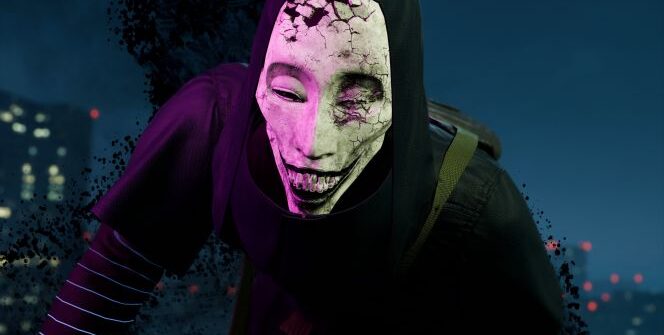
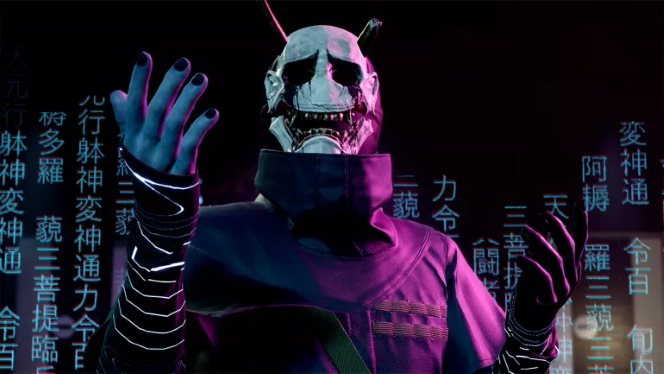
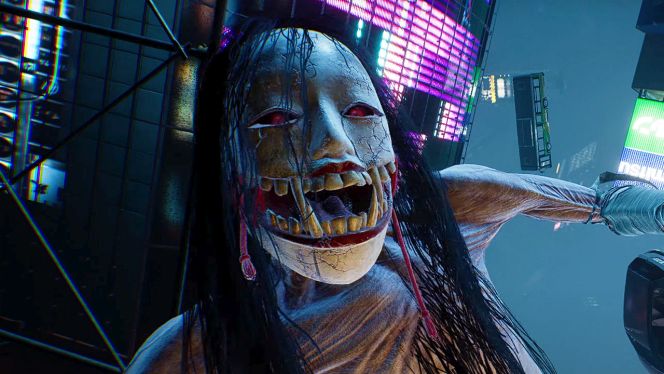
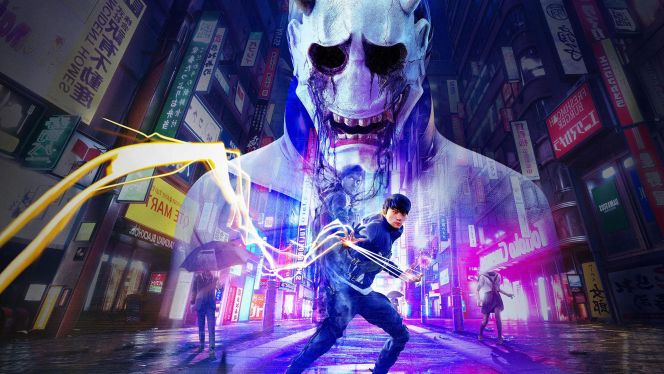


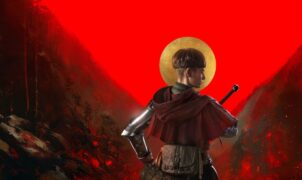
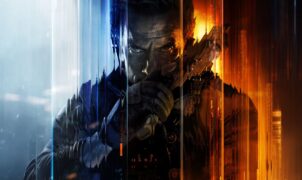
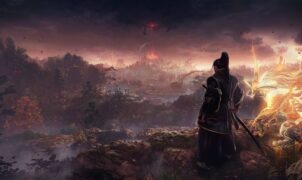





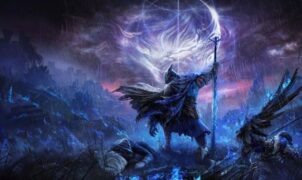
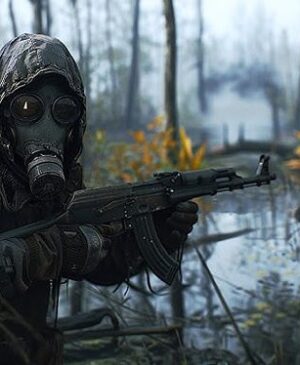

![[TGA 2025] Diablo IV: Lord of Hatred: A Character Class Returns! [VIDEO]](https://thegeek.games/wp-content/uploads/2025/12/theGeek-diablo-4-expansion-2-lord-of-hatred-paladin-skovos-horadric-cube-300x365.jpg)

Leave a Reply